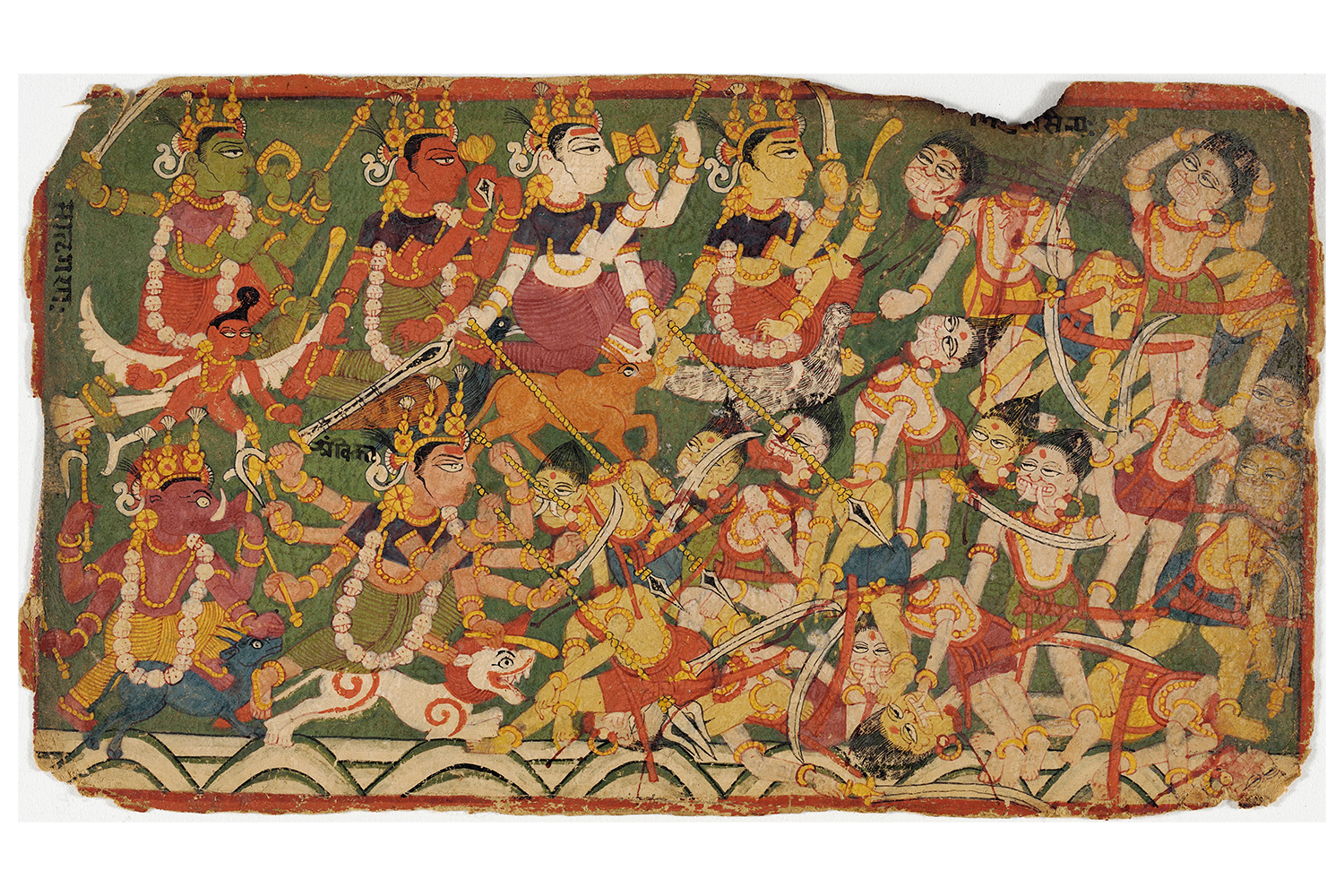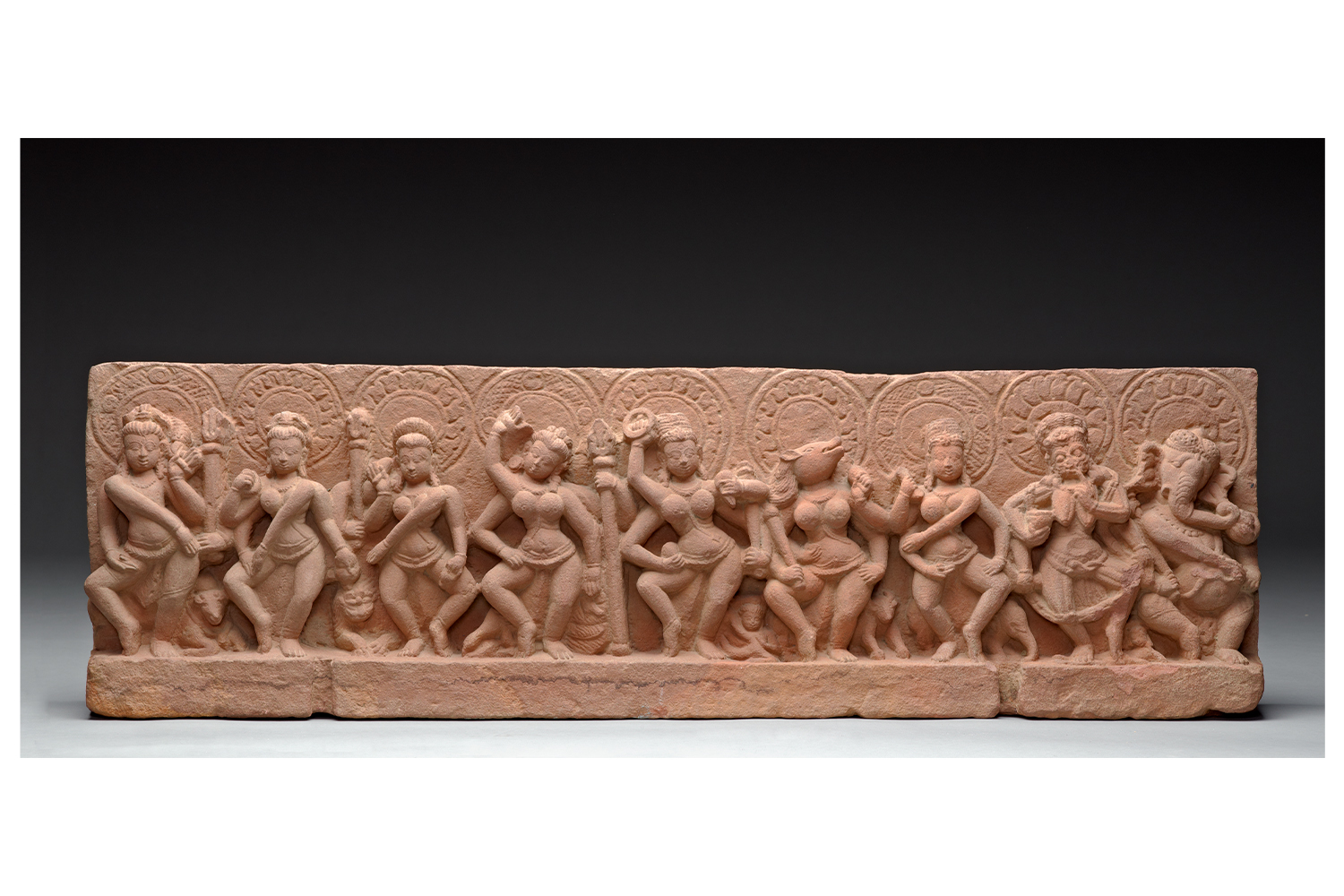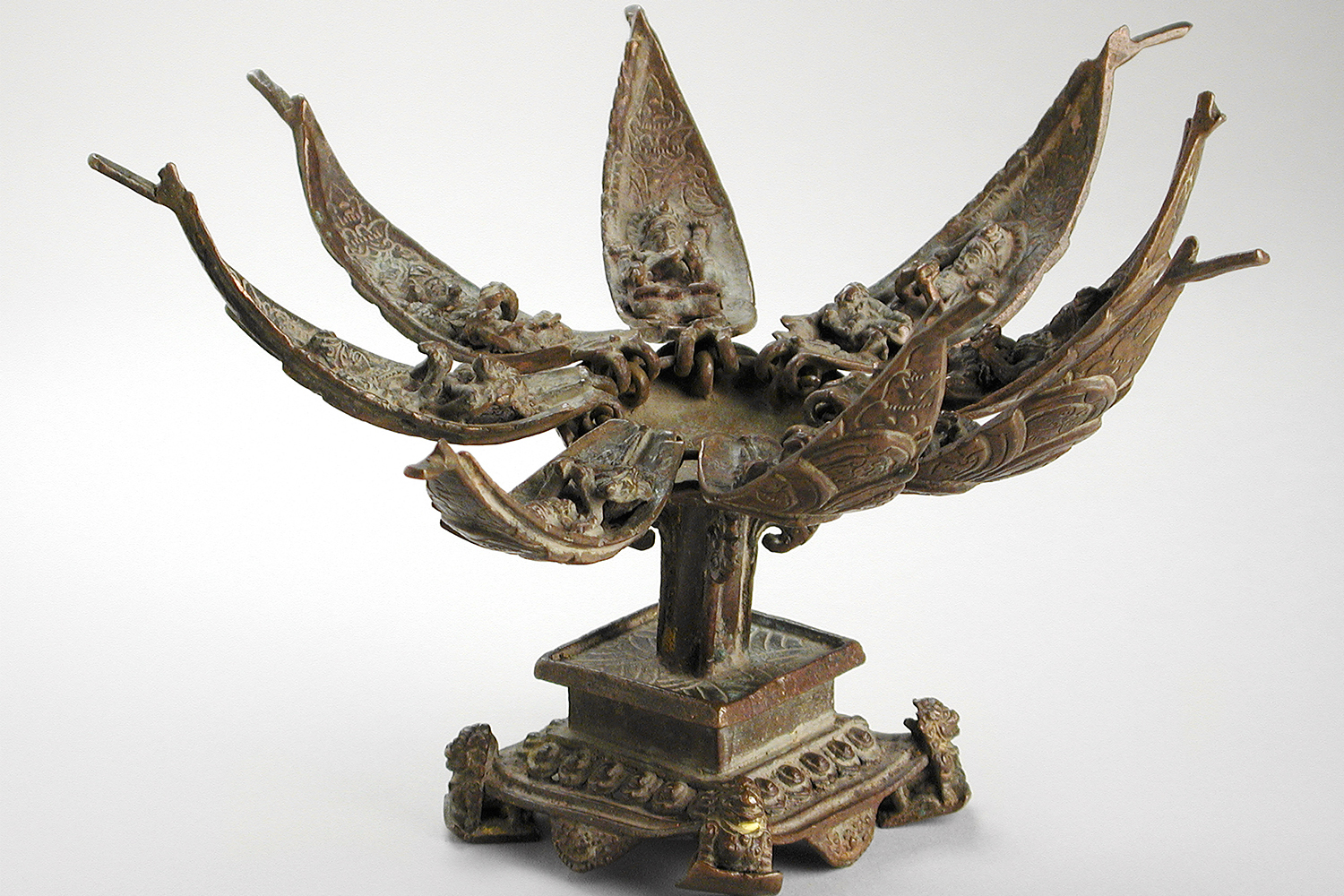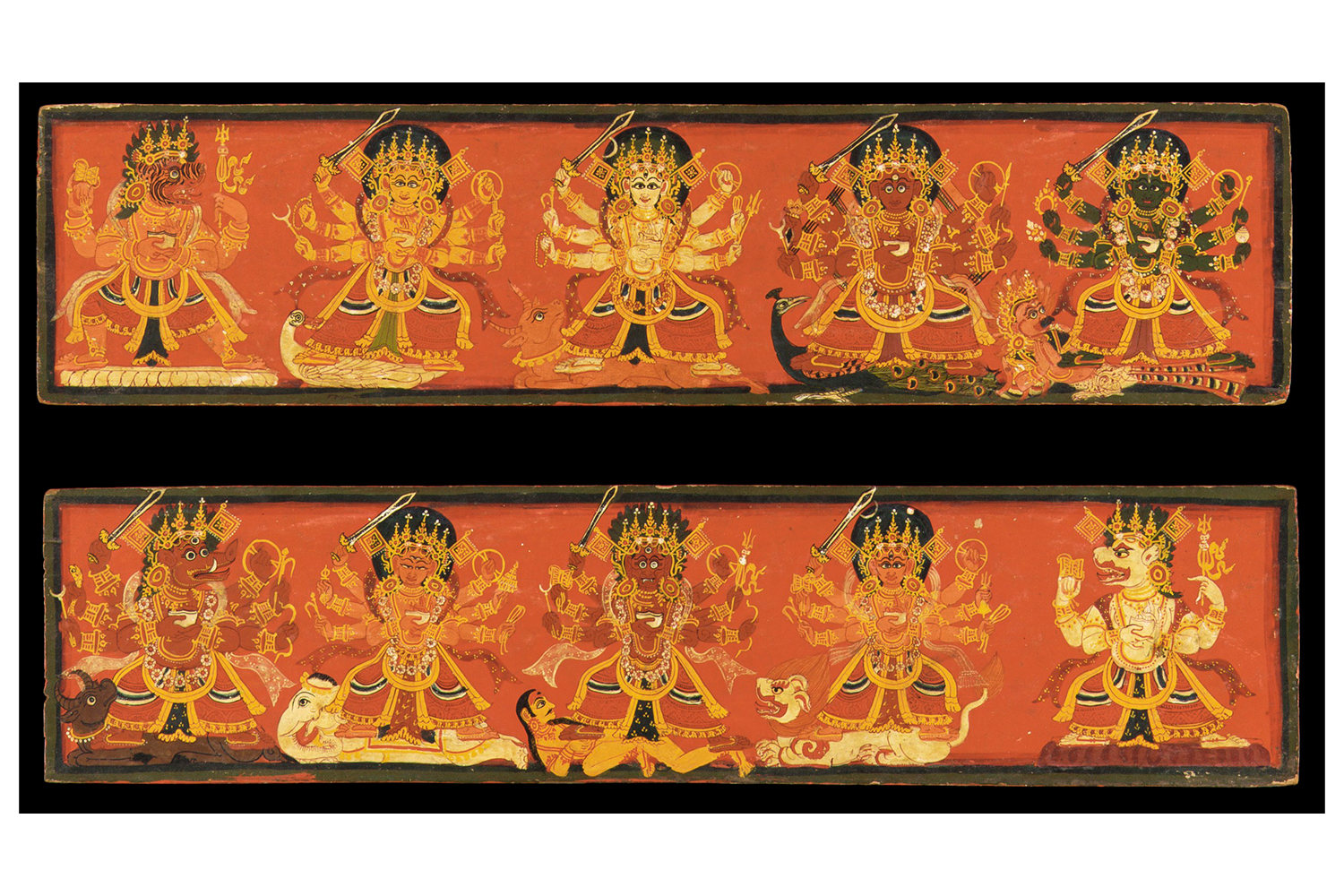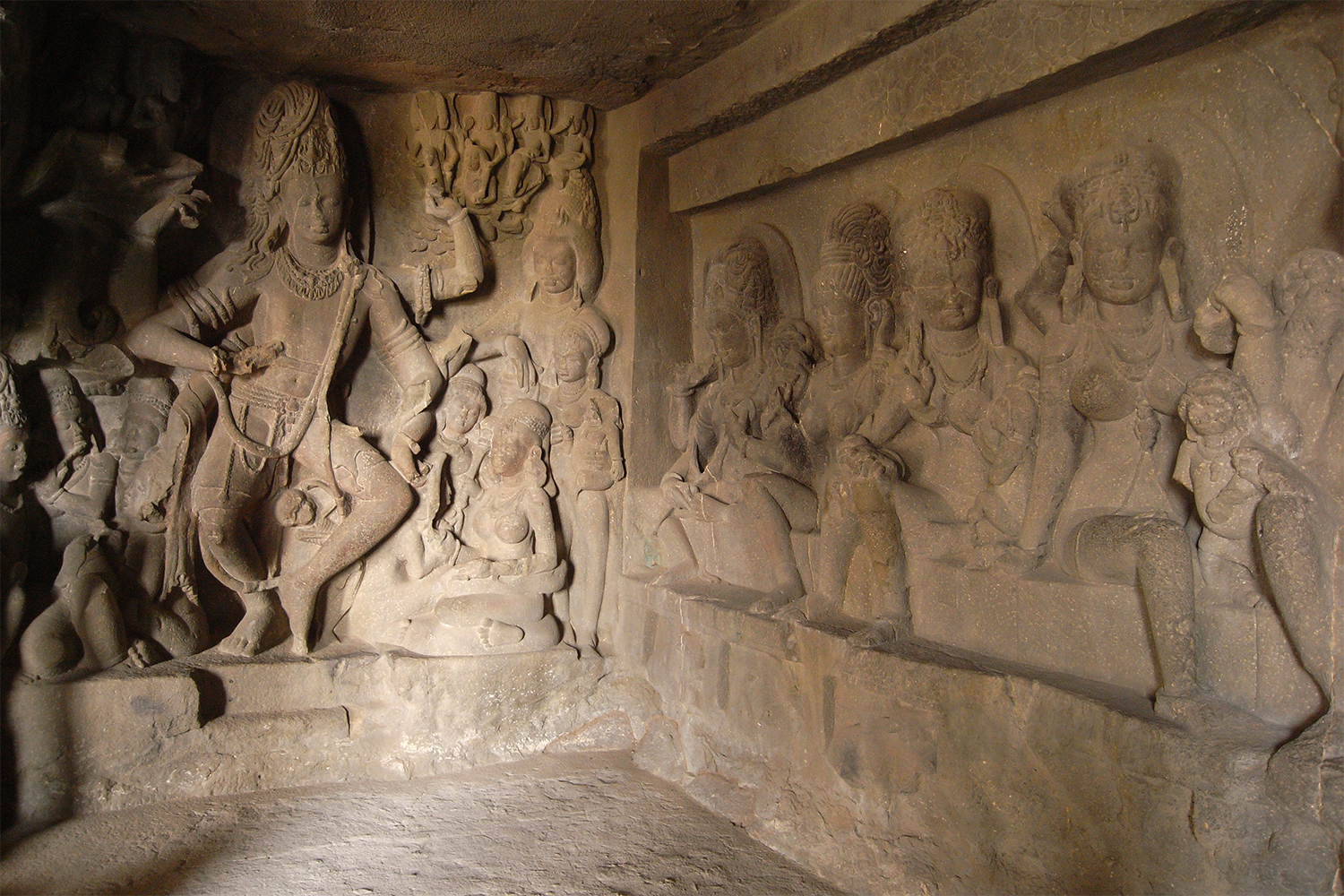ARTICLE
Saptamatrikas
The earliest mention of the Saptamatrikas appears in the Markandeya Purana, dated to between the fourth and sixth centuries, and their iconographic features have been described in several Puranic and Agamic texts, the Devi Mahatmya and also the in the Mahabharata. The earliest sculptures of the Saptamatrika are from the Kushana period, dating back to the third century BCE. These figures emphasise the maternal as well as destructive characteristics of the Saptamatrikas. A more complex iconographic representation of the group became common during the early medieval period, between the fourth and sixth centuries. During this time, the Saptamatrikas were recognised as goddesses who patronised the royal courts and the Gupta rulers had them carved on royal monuments in order to strengthen the loyalty and adherence of their armies. Other dynasties that commissioned Saptamatrika imagery include the Gurjara-Pratiharas, the Chandellas, and the Chalukyas.
The Saptamatrikas are generally carved in relief stone slabs in their sequential order. They are typically flanked by two male figures: a malevolent form of Shiva as Virabhadra, and his son Ganesha. The Saptamatrikas are popularly considered Shaivite goddesses, as evidenced by their image at the Rameshwara Cave, Ellora, a cave dedicated to Shiva,one of four depictions in Ellora.
In Tantrism, the Saptamtrikas are part of the sixty-four or eighty-one yoginis that are worshipped. The eighty-one yoginis are believed to have evolved from a group of nine matrikas, instead of seven, with the other two goddesses being Chandika and Mahalakshmi. According to the Natyashastra, the Saptamatrikas are to be worshipped before a dance performance. The Saptamatrikas also appear in artwork from the eleventh century, including in Rajasthani miniature paintings, as well as in paintings from regional schools of Nepali art.
Bibliography
Dehejia, Vidya. Yogini Cult and Temples: A Tantric Tradition. New Delhi: National Museum (1986)
Google Arts and Culture. “The Seven Mother Goddesses (Saptamatrika).” Accessed January 11, 2023. https://artsandculture.google.com/asset/the-seven-mother-goddesses-saptamatrika-unknown/OQH5DG9lnWkEEw?hl=en.
Goswami, Meghali, Ila Gupta and P Jha, “Sapta Matrikas In Indian Art And Their Significance In Indian Sculpture And Ethos: A Critical Study.” Anistoriton (2005). Accessed January 11, 2023. https://www.researchgate.net/profile/Pashupati-Jha/publication/242217256_Sapta_matrikas_in_indian_art_and_their_significance_in_indian_sculpture_and_ethos_a_critical_study/Links/5a8bb4b20f7e9b1a9555beed/Sapta-Matrikas-In-Indian-Art-And-Their-Significance-In-Indian-Sculpture-And-Ethos-A-Critical-Study.pdf.
Kinsley, David. Hindu Goddesses: Vision of the Divine Feminine in the Hindu Religious Traditions. India: Motilal Banarsidass (1988).





